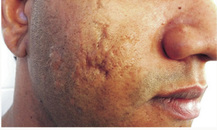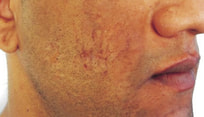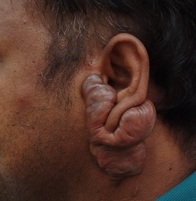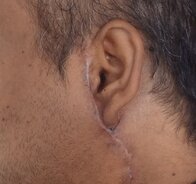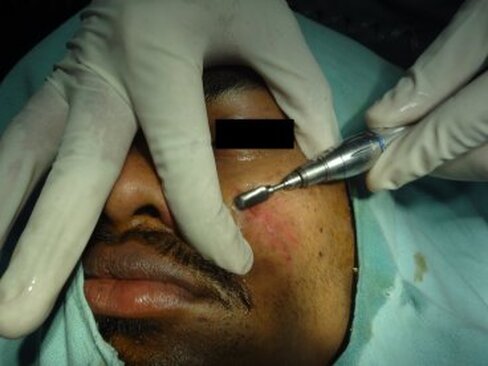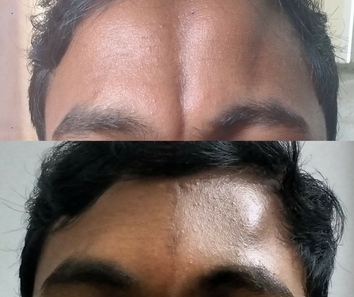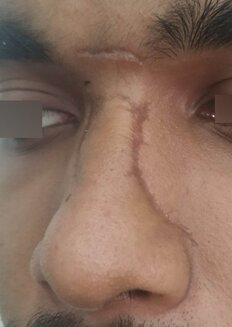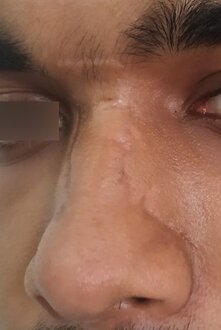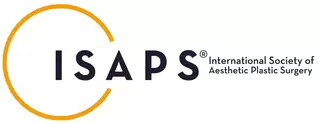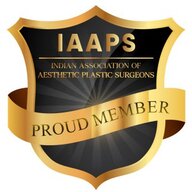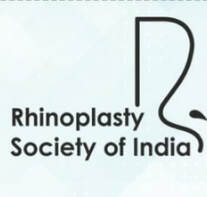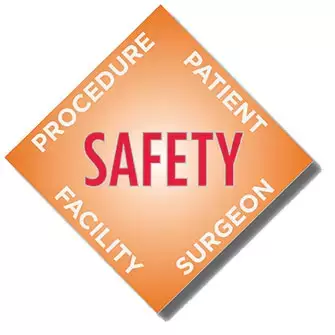SCAR REVISION
It would be unusual to be without scars. They are very common. We get them following an injury to the skin. This may be due to infections, trauma, burns or as a result of surgical incisions. Scarring is a normal phenomenon associated with healing of wounds. Scar tissue has different biomechanical properties as compared to the native tissue it replaces.
The appearance of a scar depends on the type of injury, the scarring tendency of the affected individual and steps taken to manage the wound as well as the resultant scar. Crush injuries tend to cause more severe scars when compared to clean cut wounds. Scars tend to be better when they lie along the natural creases and wrinkles of our skin. Pigmentation abnormalities (pale or dark appearance) are more often found in areas exposed to sunlight. Some of us tend to have more prominent scars compared to others. This is often attributed to our inherent scarring tendency. Uncommonly these can present as keloids when the scar tissue extends beyond the site of the wound. It is then associated with itching and thick discharge underneath the scars.
Scar management varies from conservative to surgical revision. The treatment chosen depends on various parameters like duration of scars, pigmentation (color), distortion of surrounding tissue and functional impairment (when it affects the function of the organ). We also take into account the expectations of the affected individual. The various scar treatment modalities are as follows:
1. Conservative: Often physical treatment like massage, emollient application and occlusion with a silicone sheet might be all that is required. Scars usually become prominent within a few weeks and later tend to subside. Ultrasound application may sometimes be advised in certain cases. Pressure garments have been shown to favorably affect the scar outcomes in the majority of cases with scar hypertrophy. They are especially advised when large areas are affected like in burns. Pressure garments have to be constantly worn in order to get maximally benefited from them. These garments are custom made and need to be replaced once they become worn out.
2. Creams: Various topical agents have a beneficial effect on scars. Bleaching agents and sun protection are used in the management of dark appearing scars. Vitamin A derivatives have been used in the management of atrophic scars. They are also used in combination with bleaching agents to treat photodamage.
3. Injection therapy: This is most commonly undertaken with steroids in case of hypertrophic scars and keloids. The injections are repeated at monthly intervals till the desired results are obtained. This is usually combined with the application of silicone sheet and pressure garments.
Platelet-rich plasma (PRP) is a fraction of the plasma derived from one's blood after subjecting it to centrifugal forces. It is used for the treatment of atrophic scars. These are office procedures and patient can soon get back to their daily activities.
4. Resurfacing procedures: These can are offered in case of shallow scars. The modalities which we recommend are dermabrasion and peel application. These remove the top layers of the skin and let new epithelium replace the damaged layers. The healing is usually complete in 7 to 10 days. Wound healing is associated with new collagen formation. Further sessions are sometimes necessary to further improve outcome.
5. Surgical scar revision: This is comprised of various revisions like Z plasty, W plasty, skin grafting, local flap cover etc. The exact method advised depends on the orientation, location, availability of local tissues and various other parameters. Revision of small scar in adults are carried out under local anesthesia and do not require admission into a hospital. Suture removal is followed by a short duration of the taping of the skin to get optimal results. We advice follow up with conservative modalities like massage, occlusion and silicone sheet application.
Revision of large scars in adults and procedures in children may necessitate general anesthesia. It is then managed as a short stay procedure.
Practical tips for improvement of scar outcomes:
1. Expedite wound healing: This includes keeping the wound clean and obtaining prompt medical attention. The longer a wound takes to heal, more likely is the probability of a prominent scar.
2. Protect from the sun: Once the scar has formed it is advisable to keep it protected from the sun. We recommend the use of brimmed caps, umbrella, and sunglasses. I usually recommend the daily application of a sunscreen in areas exposed to the sun. We must apply even if we are not stepping out in the sun. It is ideally repeated in 3 to 4 hours.
3. Massage: Massaging with an emollient helps. This can be done many times a day. Gentle massage with fingertips is advised.
4. Seek medical advice: In case, the wound is taking longer to heal and if you think the scars appear prominent with red and raised borders do get proper attention. Sometimes small modifications in your daily routine might be all that is required for a better outcome.
The appearance of a scar depends on the type of injury, the scarring tendency of the affected individual and steps taken to manage the wound as well as the resultant scar. Crush injuries tend to cause more severe scars when compared to clean cut wounds. Scars tend to be better when they lie along the natural creases and wrinkles of our skin. Pigmentation abnormalities (pale or dark appearance) are more often found in areas exposed to sunlight. Some of us tend to have more prominent scars compared to others. This is often attributed to our inherent scarring tendency. Uncommonly these can present as keloids when the scar tissue extends beyond the site of the wound. It is then associated with itching and thick discharge underneath the scars.
Scar management varies from conservative to surgical revision. The treatment chosen depends on various parameters like duration of scars, pigmentation (color), distortion of surrounding tissue and functional impairment (when it affects the function of the organ). We also take into account the expectations of the affected individual. The various scar treatment modalities are as follows:
1. Conservative: Often physical treatment like massage, emollient application and occlusion with a silicone sheet might be all that is required. Scars usually become prominent within a few weeks and later tend to subside. Ultrasound application may sometimes be advised in certain cases. Pressure garments have been shown to favorably affect the scar outcomes in the majority of cases with scar hypertrophy. They are especially advised when large areas are affected like in burns. Pressure garments have to be constantly worn in order to get maximally benefited from them. These garments are custom made and need to be replaced once they become worn out.
2. Creams: Various topical agents have a beneficial effect on scars. Bleaching agents and sun protection are used in the management of dark appearing scars. Vitamin A derivatives have been used in the management of atrophic scars. They are also used in combination with bleaching agents to treat photodamage.
3. Injection therapy: This is most commonly undertaken with steroids in case of hypertrophic scars and keloids. The injections are repeated at monthly intervals till the desired results are obtained. This is usually combined with the application of silicone sheet and pressure garments.
Platelet-rich plasma (PRP) is a fraction of the plasma derived from one's blood after subjecting it to centrifugal forces. It is used for the treatment of atrophic scars. These are office procedures and patient can soon get back to their daily activities.
4. Resurfacing procedures: These can are offered in case of shallow scars. The modalities which we recommend are dermabrasion and peel application. These remove the top layers of the skin and let new epithelium replace the damaged layers. The healing is usually complete in 7 to 10 days. Wound healing is associated with new collagen formation. Further sessions are sometimes necessary to further improve outcome.
5. Surgical scar revision: This is comprised of various revisions like Z plasty, W plasty, skin grafting, local flap cover etc. The exact method advised depends on the orientation, location, availability of local tissues and various other parameters. Revision of small scar in adults are carried out under local anesthesia and do not require admission into a hospital. Suture removal is followed by a short duration of the taping of the skin to get optimal results. We advice follow up with conservative modalities like massage, occlusion and silicone sheet application.
Revision of large scars in adults and procedures in children may necessitate general anesthesia. It is then managed as a short stay procedure.
Practical tips for improvement of scar outcomes:
1. Expedite wound healing: This includes keeping the wound clean and obtaining prompt medical attention. The longer a wound takes to heal, more likely is the probability of a prominent scar.
2. Protect from the sun: Once the scar has formed it is advisable to keep it protected from the sun. We recommend the use of brimmed caps, umbrella, and sunglasses. I usually recommend the daily application of a sunscreen in areas exposed to the sun. We must apply even if we are not stepping out in the sun. It is ideally repeated in 3 to 4 hours.
3. Massage: Massaging with an emollient helps. This can be done many times a day. Gentle massage with fingertips is advised.
4. Seek medical advice: In case, the wound is taking longer to heal and if you think the scars appear prominent with red and raised borders do get proper attention. Sometimes small modifications in your daily routine might be all that is required for a better outcome.
Related topics
To know more about the changes that can be achieved with surgical scar revision, click here.
- Infographic on scar management tips
- Keloids: symptoms and treatment options. A keloid is a type of scar that grows beyond the initial site of injury. It is often associated with itching and discharge.
- FAQ about treatment of scars
- Surgical treatment option for scars
- Serial excision in plastic surgery. Indications and benefits
- What can be achieved with surgical scar revision?
- Plastic surgery for burn scars
- Hypertrophic scars | Prevention and Treatment
- Conservative management of scars at home
To know more about the changes that can be achieved with surgical scar revision, click here.

